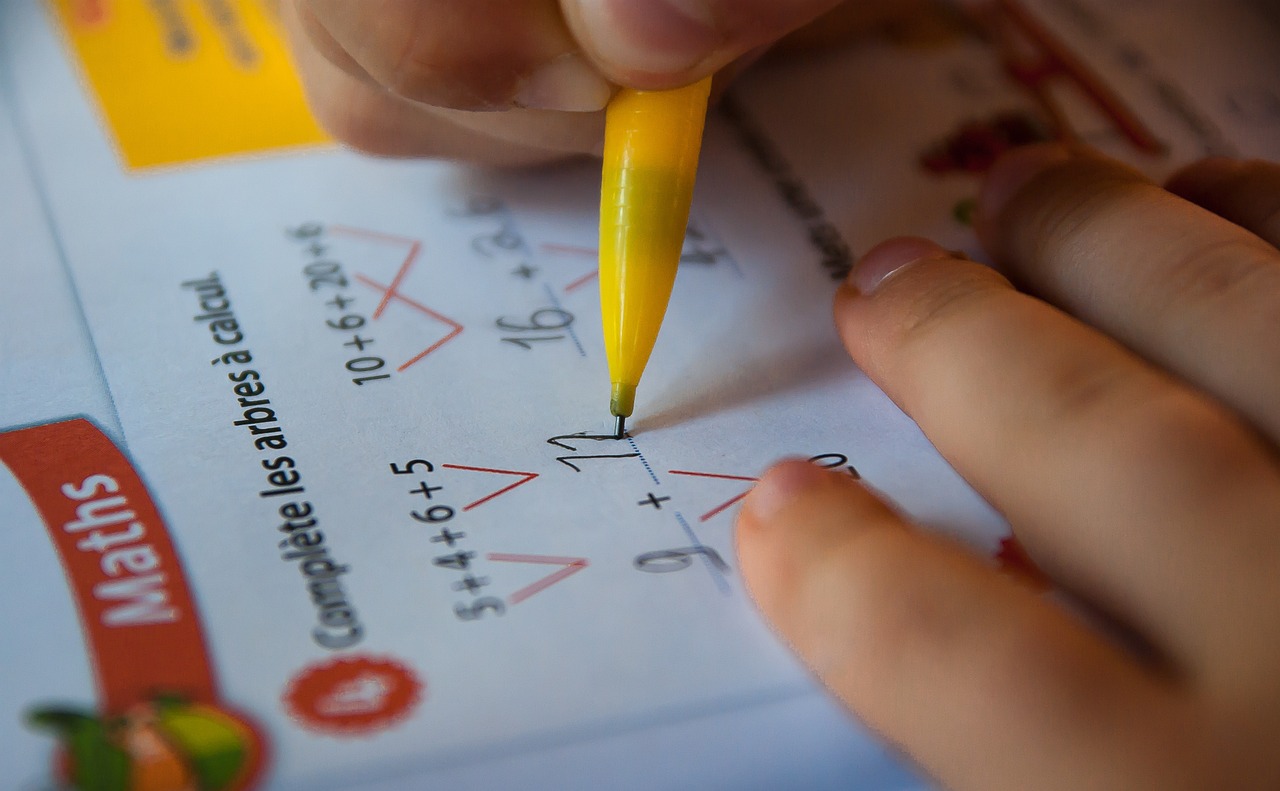Article Body
The Intricate Dance of Mathematics and Humanity
Mathematics, often seen as a purely logical, abstract discipline, has a profound and pervasive influence on humanity. From ancient civilizations to modern technological advancements, mathematics has shaped human progress in ways that are often invisible yet incredibly powerful. The relationship between mathematics and humanity is far from one-sided. While mathematics provides the framework for understanding the world, humanity continuously shapes and redefines how math is used to solve real-world problems.
This article explores the intricate dance between mathematics and humanity, covering its historical evolution, practical applications, philosophical implications, and the symbiotic relationship that continues to shape both fields.
1. The Historical Roots of Mathematics
Mathematics, in its most primitive form, began as a tool to solve practical problems. Early humans needed math to track time, measure land, and understand the cyclical patterns of nature. The earliest known use of mathematics dates back to the Babylonians and Egyptians, who used counting systems and basic arithmetic for trading, astronomy, and architectural construction.
Early Mathematics and Human Survival
- Sumerians and Babylonians: Ancient Sumerians are credited with developing the first known number system around 3,000 BCE. This base-60 (sexagesimal) system was used in astronomy and commerce. The Babylonians further developed this system, contributing to the understanding of geometry and the introduction of the concept of zero, though it was not used in the same way it is today.
- Egyptians: The Egyptians employed arithmetic and geometry to construct the pyramids and other monumental structures. They used approximations of pi and simple algebraic equations to divide land and calculate volumes.
- Greeks and Philosophers: The Greeks, particularly Pythagoras and Euclid, elevated mathematics from a practical tool to an intellectual pursuit. Pythagoras’s famous theorem about right triangles and Euclid’s axioms formed the foundation for much of modern geometry.
Mathematics, thus, emerged from the basic human need to solve real-world problems, evolve civilizations, and understand the universe.
2. Mathematics and Its Role in Human Civilization
As civilizations grew and the demands of society became more complex, mathematics evolved into a more sophisticated and specialized tool. From the discovery of the number zero to the formulation of calculus, mathematics played a central role in human advancement.
The Age of Discovery and Revolution
- Renaissance and Enlightenment: With the rise of the Renaissance and Enlightenment, mathematical thinking reached new heights. Scientists like Isaac Newton and Gottfried Wilhelm Leibniz developed calculus independently, providing the mathematical foundation for the scientific revolution. This period marked the start of an era where math began to explain phenomena in physics, astronomy, and engineering.
- Industrial Revolution: The Industrial Revolution relied heavily on mathematics, especially in the development of machinery, optimization of production, and engineering of infrastructure. The use of mathematics in improving efficiency and design led to an explosion of technological advances, shaping modern industry.
- Modern Science and Technology: The 20th century saw mathematics take an even more dominant role in society, particularly through the rise of computers and algorithms. The fields of quantum mechanics, relativity, and cryptography, for example, would not exist without advanced mathematical frameworks.
Today, mathematics permeates every aspect of human life, from the software on our phones to the management of complex global financial systems.
3. Practical Applications of Mathematics in Human Life
Mathematics is not just an academic pursuit but a powerful tool that impacts all aspects of modern life. It helps us understand the universe, make decisions, manage resources, and solve problems.
Mathematics in Technology
- Computer Science and Artificial Intelligence: Algorithms, data structures, machine learning, and artificial intelligence (AI) are all rooted in mathematics. Mathematical models allow computers to process and analyze vast amounts of data, leading to innovations in fields like healthcare, transportation, and communication.
- Cryptography and Security: The safety of online transactions and private communications relies on complex mathematical algorithms. Cryptography, based on number theory, provides encryption systems that protect data across the internet.
Mathematics in Medicine
- Medical Imaging: Mathematics plays a vital role in diagnostic imaging techniques like MRI and CT scans, which rely on sophisticated algorithms to create clear and accurate images of the human body.
- Pharmacology and Dosage: Dosing and drug formulation require precise mathematical models to predict how a drug will behave in the body. Pharmaceutical research, in turn, depends on statistical analysis to test drug efficacy.
Economics and Finance
- Financial Models and Forecasting: Mathematics is indispensable in economics, where it is used to model financial systems, manage risk, and predict economic trends. Quantitative analysis and statistical tools are crucial for understanding market behavior and making informed financial decisions.
- Global Supply Chains and Optimization: Linear programming, a branch of optimization, is applied in industries to streamline operations, reduce costs, and maximize efficiency in supply chains.
Environmental and Social Issues
- Climate Modeling: Mathematical models are used to simulate and predict climate patterns, helping us understand the effects of climate change and plan for the future.
- Social Sciences and Sociology: In fields like sociology and psychology, mathematics helps quantify human behavior, measure social trends, and analyze data from surveys and experiments. Statistical methods play a crucial role in social science research.
4. The Philosophy of Mathematics: Bridging the Abstract and the Real
Mathematics is not only a tool but also a subject of philosophical inquiry. The relationship between abstract mathematical truths and the real world has been a topic of discussion for centuries. Is mathematics discovered or invented? Does mathematics exist independently of human thought, or is it a product of the mind?
Mathematical Realism vs. Anti-Realism
- Mathematical Realism: This viewpoint holds that mathematical entities (such as numbers, functions, and sets) exist independently of human thought. According to this view, mathematical truths are discovered rather than invented. Some mathematicians and philosophers, like Kurt Gödel, argued that mathematics is a universal language that exists whether or not humans are around to perceive it.
- Mathematical Anti-Realism: In contrast, anti-realists claim that mathematics is a human invention, and its truths are not "discovered" but created. The development of mathematical concepts and frameworks is seen as a social and cultural phenomenon rather than an exploration of an objective reality.
Mathematics as a Language
Mathematics is often described as the language of the universe. From the orbits of planets to the behavior of subatomic particles, the patterns in nature can often be expressed mathematically. The beauty of mathematical equations, such as Einstein's famous equation E=mc2E = mc^2, lies in their ability to succinctly capture the fundamental laws of the universe.
Philosophers and mathematicians alike have long marveled at the connection between mathematics and the physical world. The notion that abstract mathematical structures can accurately model physical reality is a testament to the enduring relationship between math and humanity.
5. Mathematics and Human Creativity
Despite its logical and often rigid appearance, mathematics is a highly creative endeavor. Mathematicians are often seen as artists who create beautiful structures and elegant proofs. The discovery of new theorems, solutions to unsolved problems, and the application of math to new fields all require immense creativity.
Mathematical Aesthetics
Mathematics has its own kind of beauty. The elegance of a proof or the symmetry in an equation can be aesthetically pleasing, and many mathematicians, such as Henri Poincaré and Richard Feynman, have spoken of the joy they felt when discovering new mathematical truths.
The process of mathematical discovery is akin to artistic creation. Just as artists create new worlds through their work, mathematicians discover new mathematical landscapes, filled with intricate patterns and relationships.
6. The Symbiotic Relationship: How Humanity Shapes Mathematics
Mathematics does not exist in a vacuum; it is deeply intertwined with humanity’s needs, desires, and ambitions. Human curiosity, imagination, and drive for innovation shape how mathematics is applied and developed.
Technological Innovations and New Mathematical Frontiers
As technological challenges emerge, new branches of mathematics are created to address them. For instance, the advent of quantum computing has led to the development of quantum algorithms, and the rise of machine learning has sparked interest in new areas of statistics and optimization.
Cultural Influences on Mathematics
The way mathematics is studied and applied can also be influenced by cultural factors. Different civilizations have contributed to the development of mathematics in unique ways. For example, ancient Indian mathematicians developed the concept of zero and the decimal system, while Arab scholars preserved and expanded upon Greek mathematical texts during the medieval period.
Frequently Asked Questions (FAQ)
1. Why is mathematics often considered a universal language?
Mathematics is often called a universal language because its principles and concepts apply consistently across the universe. Whether it's the geometry of space, the patterns in nature, or the laws of physics, mathematical equations and formulas offer a precise and universal way to describe and understand the world around us.
2. How does mathematics influence everyday life?
Mathematics impacts our daily lives in many ways, from budgeting and managing finances to using technology like smartphones and computers. It helps in decision-making, optimizing resources, and solving everyday problems, such as cooking recipes or calculating travel time.
3. Can mathematics exist without humans?
This is a topic of philosophical debate. Some argue that mathematics exists independently of humans and is discovered, while others believe that mathematics is a human invention. Regardless of this debate, mathematics continues to be a vital tool for understanding and interacting with the world.


Comments